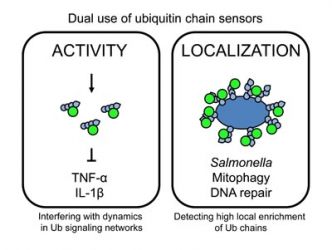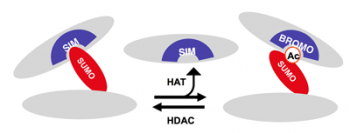News from the Institute

In recognition of his groundbreaking work in decrypting the Ubiquitin code, Ivan Dikic is to receive the Gottfried Wilhelm Leibniz Prize 2013, Germany's most prestigious scientific award. The award is funded and presented by the German Research Foundation (DFG). It is the research prize with the highest endowment worldwide and comes with a grant of 2.5 M Euro.
... (read more)
BIF will fund his research on Inhibitors of Apoptosis (IAPs) with a generous support of 825000 euros for the next three years.
... (read more)
The Award honors the pioneering work of Ivan Dikic in understanding the Ubiquitin code, and his efforts in training and education of young scientists.
... (read more)
An international team of scientists led by IBCII director Ivan Dikic developed specific Ubiquitin biosensors for in vivo application. This approach might mark a major technical breakthrough in detection of Ubiquitin signals in living cells. It is published in today's online issue of Molecular Cell.
... (read more)
The covalent attachment of the ubiquitin-like modifier SUMO to proteins serves an important mechanism for the control of protein-protein interactions. This is generally mediated via recognition of a SUMO-conjugate by an interaction partner that contains a specific SUMO interaction module, termed SIM (SUMO interaction motif). A major question is how the dynamics of SUMO/SIM interactions are regulated.
... (read more)